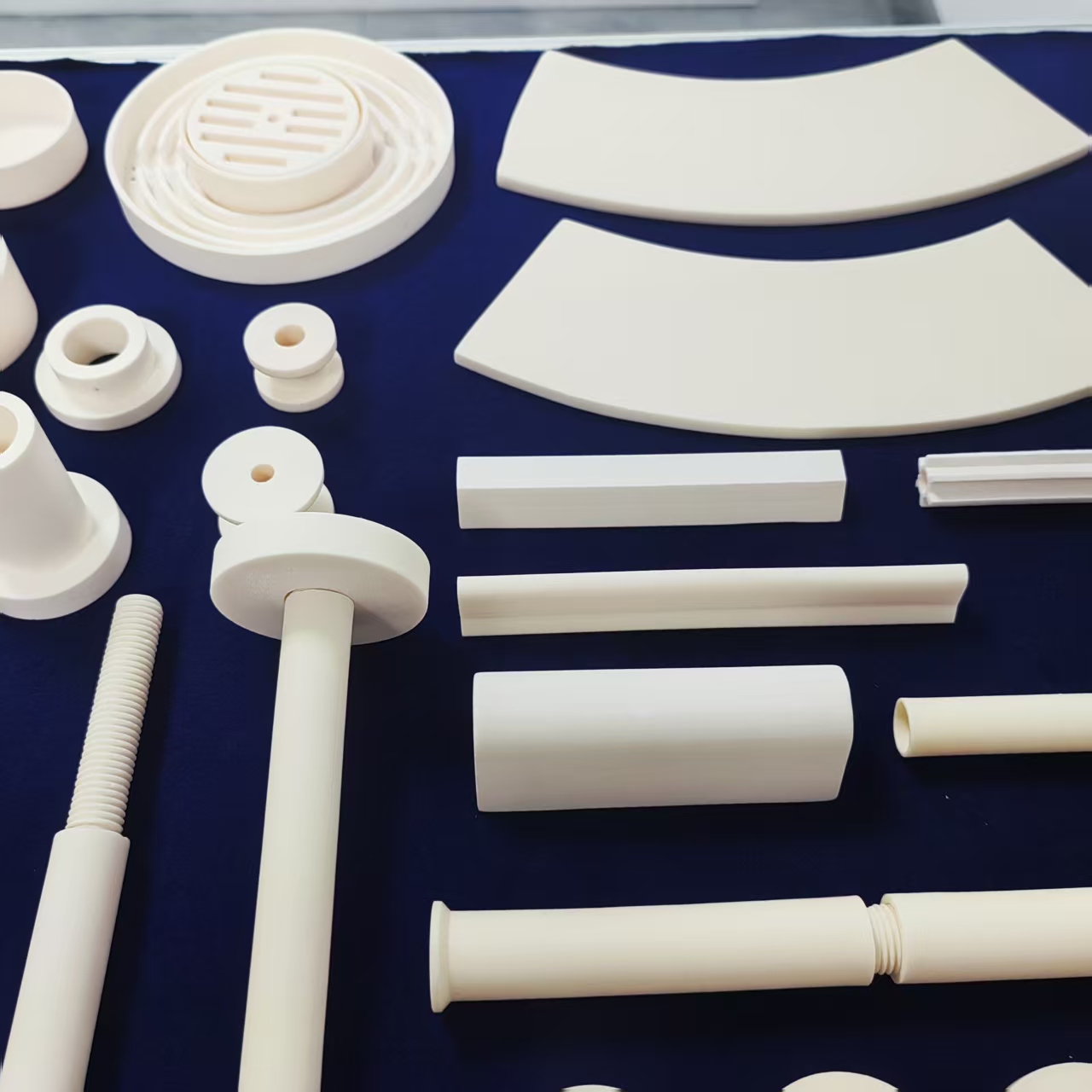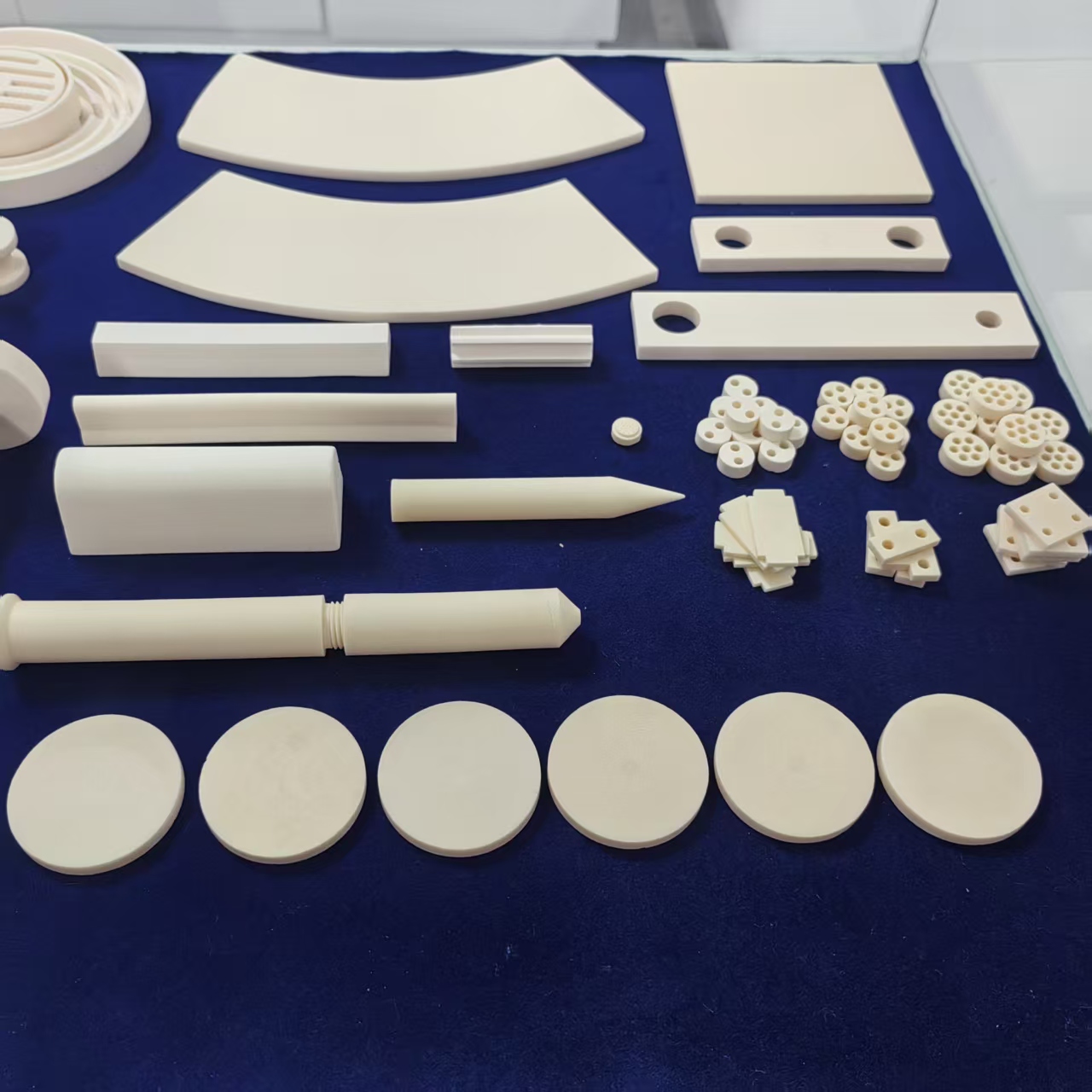Alumina ceramic components possess excellent properties such as high hardness, high mechanical strength, ultra-wear resistance, high temperature resistance, high electrical resistivity, and good electrical insulation performance. They can meet the complex performance requirements of semiconductor manufacturing in special environments like vacuum and high temperature, and play an irreplaceable and important role in semiconductor manufacturing production lines. Their applications cover almost all semiconductor manufacturing equipment, making them key components of semiconductor production equipment. With the continuous development of the semiconductor industry, the importance of alumina ceramic components in the industrial chain will become even more prominent.


❶...... Applications of Alumina Ceramic Components in the Semiconductor Field
Alumina ceramic is a type of ceramic material with alpha-alumina (α-Al₂O₃) as its main crystalline phase. Based on the difference in alumina content, it can be divided into two categories: high-purity type and ordinary type.
The performance of alumina ceramics improves as the alumina content increases; however, the higher the alumina content, the more difficult the preparation process becomes. When alumina ceramics are applied in the semiconductor field, they have extremely high purity requirements, typically exceeding 99.5%.
In the semiconductor field, alumina ceramic components are among the key parts of semiconductor equipment. Most of them are used in chambers closer to the wafer. Classified by application in semiconductor equipment, they are mainly divided into categories such as ring and cylinder type, gas flow guidance type, load-bearing and fixing type, gripper gasket type, and module type.
Ring and Cylinder Type
In the etching process, to reduce wafer contamination during plasma etching, high-purity alumina coatings or alumina ceramics with strong corrosion resistance are selected as protective materials for etching chambers and chamber liners.
Gas Flow Guidance Type
In the plasma cleaning process, corrosive gases containing highly reactive halogen elements such as fluorine-based and chlorine-based gases are used. Gas nozzles are usually made of alumina ceramics, which are required to have properties such as high plasma resistance, dielectric strength, and strong corrosion resistance to process gases and by-products. Meanwhile, they have a precise internal pore structure to accurately control gas flow.
Load-Bearing and Fixing Type
During the semiconductor manufacturing process, wafers may undergo high-temperature treatments such as etching and ion implantation. As a carrier for wafer transfer, alumina wafer stages can ensure the stability and safety of wafers during the transfer process. Alumina wafer stages have good thermal conductivity, which enables them to effectively dissipate and conduct away the heat generated by wafers, thereby protecting the wafers from heat damage.
❷...... Global Development Status of Alumina Ceramic Components for the Semiconductor Industry
Precision ceramic components mainly refer to core components for semiconductor equipment, which are made from advanced ceramic materials such as alumina, aluminum nitride, and silicon carbide through precision processing. Among these, alumina ceramic components have the most extensive applications and the largest usage scale, accounting for approximately 45% of the precision ceramic components market.
❸...... Development Trends of Alumina Ceramic Components in the Semiconductor Field
Alumina ceramic component manufacturing is a technology-intensive industry. In high-end product fields such as semiconductor applications, enterprises not only need long-term technological accumulation but also require a team of professional talents with rich production and manufacturing experience and proficient equipment operation skills.
Technological innovation is the core driving force behind the widespread application of alumina in semiconductor equipment. As the feature size of chips decreases, semiconductor equipment imposes more stringent requirements on components, with higher standards for their density, uniformity, corrosion resistance, and other properties. In recent years, scholars at home and abroad have developed a variety of new processes to improve the sintering performance of alumina ceramic materials, enabling the rapid densification of materials at lower sintering temperatures. These processes include self-propagating high-temperature sintering, flash sintering, cold sintering, and oscillatory pressure sintering. Among them, cold sintering enhances the rearrangement and diffusion of particles by adding a transient solvent to the powder and applying high pressure (350–500 MPa), allowing the ceramic powder to achieve sintering densification at a lower temperature (120–300 °C) and in a shorter time.
Continuous R&D is essential to keep pace with the "rhythm" of market iteration and renewal. Currently, the global integrated circuit manufacturing process has advanced to the more cutting-edge 3-nanometer node. Semiconductor equipment and precision components for semiconductor equipment must undergo constant R&D upgrades and process improvements to meet the manufacturing needs of downstream sectors. Once semiconductor equipment is upgraded or replaced, the specific requirements for components in the new equipment will change simultaneously. With the development of semiconductor technology, the performance requirements for alumina ceramic components are becoming increasingly stringent, including higher wear resistance, better high-temperature resistance, and superior electrical insulation. The industry trend tends toward the R&D of alumina powder materials with higher purity and more refined structures, as well as the adoption of advanced preparation technologies.

